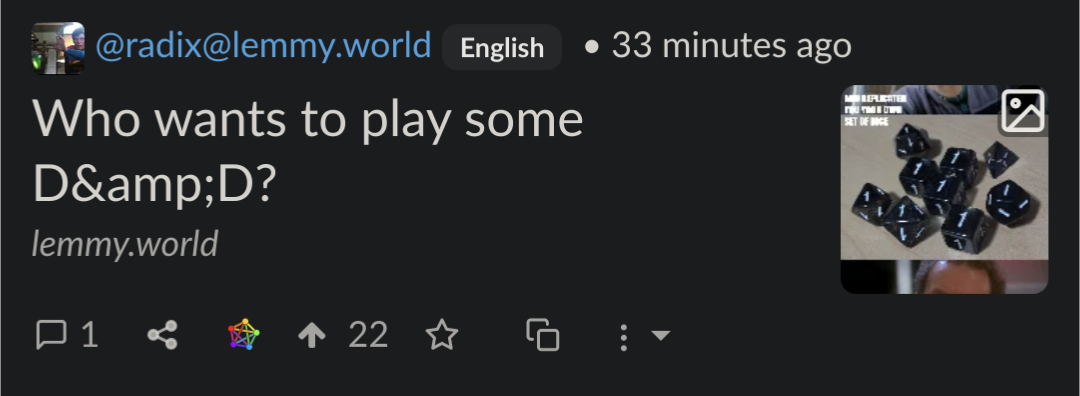I believe that’s a problem with Lemmy. Boost shows the titles as they are received from the API. I think Lemmy 0.19 fixes that according to this comment: https://lemmy.world/comment/7986943
Interesting, I’m on lemmy.world and I’m still getting the issue, is there something I have to do personally to get 0.19? I assumed that was server sided
is there something I have to do personally to get 0.19?
No, just wait. They are updating to 0.19.3 on Saturday
They didn’t fix non breaking space though xd
As others have said, its an issue with older versions of Lemmy (as in, the websites running it, not your client). Once your admins update the website/instance you’re using, it’ll be fixed.
I have this issue on every client I have tried
So I researched it and it seems to be an issue with how boost (and many other places on the web) have automated escape characters in HTML, in other words because & is reserved in HTML for other things to actually parse an ampersand you need to write “&+amp” to escape the escape character. So whatever process boost is using for this may be not parsing correctly
Edit: apparently it’s Lemmy as a whole, what I’m wondering is why do some users not see this then
I use the Connect app and it also has the same problem with ampersands
not even just Lemmy. am on mbin, same issue
deleted by creator
Jerboa does it too. Seems to work on web though.
Happens on Lemmy too.
Looks like a formatting typo from the OP. Here’s what it looks like on my instance (not Boost).

And another example from another sub:

It is not, maybe it has something to do with the client or the instance from where you see it, here is how it looks with Sync for Lemmy and Lemme instance…
I think it is a known bug when using the “&”.
I will note I often see this all over the Web with the ampersand
It’s what happens when content is url encoded and not decoded again later. It’s easy to do by accident because you can’t tell if a string is already url encoded in any general way, so the processes responsible for sending and receiving need to agree on how/when to encode and decode (i.e. they both have the power to break it for the other)
I have the same issue with Memmy
Having the same issue on boost. I’ll change clients and see if it sticks around.
God’s punishing you for not using DnD
Edit: the ampersand is a code character, it does not always translate well in web presentation. This has been A Thing for about 30 years
It has been a solved problem for a really long time. You use a computer to keep track if you encoded the & already or not.
But people insist on using tools that throw that away.
Sure but I think the issue is finding exactly where In the pipeline the problem is occuring. The end user can’t be expected to try and fix it
deleted by creator









